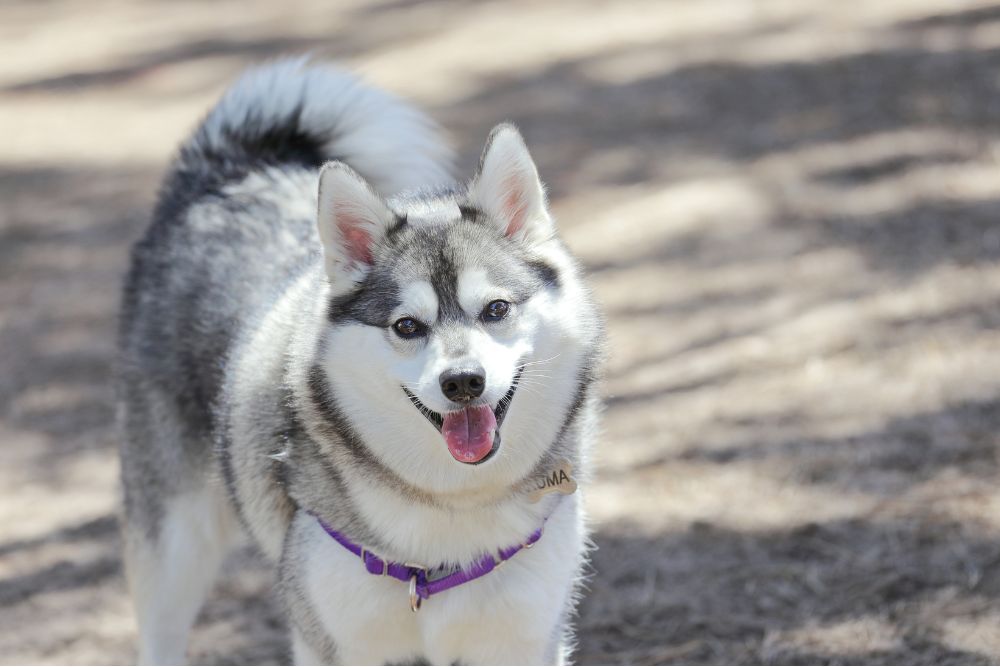Alaskan Klee Kai's Vocalizations and Communication Methods
Welcome to our comprehensive guide on Alaskan Klee Kai’s vocalizations and communication methods. We are dedicated to providing you with valuable and in-depth information about this fascinating dog breed. Alaskan Klee Kai, often referred to as AKK, are small and spitz-type dogs that were originally developed in Alaska, USA. With their stunning appearance and lively personalities, they have gained popularity as wonderful companions and family pets.

Understanding Alaskan Klee Kai's Vocalizations
Alaskan Klee Kai are known for their expressive vocalizations, and understanding what they are trying to communicate is essential for building a strong bond with them. Let’s explore the various vocalizations they use to express themselves:
1. Barking
Barking is one of the most common ways for Alaskan Klee Kai to communicate. It can serve various purposes, including alerting their owners to potential dangers, expressing excitement, or even seeking attention. As a responsible owner, it’s crucial to differentiate between different types of barks to better understand their needs.
2. Howling
Like their larger relatives, wolves, Alaskan Klee Kai are known for their hauntingly beautiful howls. Howling often signifies their connection to their ancient ancestry and can be triggered by various stimuli, such as hearing other dogs howl, responding to sirens, or expressing loneliness.
3. Whining
When Alaskan Klee Kai whine, it’s typically an indication of distress, anxiety, or a desire for something. They may whine when they need to go outside, when they want to play, or when they’re seeking comfort. Paying attention to the context in which they whine can help you address their needs promptly.
4. Growling
Growling is a vocalization that may sound threatening, but for Alaskan Klee Kai, it can be a way of expressing discomfort or warning. Growling may occur when they feel threatened, possessive of their belongings, or when they are in pain. It’s essential to respect their boundaries and investigate the cause of their unease.


Communication Methods
Apart from vocalizations, Alaskan Klee Kai use various other methods to communicate their feelings and needs. Understanding these methods can enhance the bond between you and your furry friend:
1. Body Language
Alaskan Klee Kai are highly expressive through their body language. They use their tails, ears, eyes, and posture to convey a wide range of emotions. For example:
- A wagging tail generally indicates happiness and excitement.
- Ears perked up forward can indicate curiosity or alertness.
- Avoiding eye contact or cowering may suggest fear or submission.
Paying attention to their body language can help you gauge their emotions accurately.
2. Gestures and Actions
AKKs often use gestures and actions to communicate. They may nuzzle, lick, or paw at their owners to seek attention or affection. Conversely, they might jump or back away if they feel uncomfortable in a situation. Recognizing these gestures will allow you to respond appropriately to their needs.
3. Social Interaction
Alaskan Klee Kai are highly social dogs and thrive on interaction with their human families. They enjoy spending time with you during play, training sessions, or simply cuddling on the couch. Regular socialization is essential to prevent behavioral issues and keep them mentally stimulated.
Alaskan Klee Kai’s Vocalizations and Communication Methods
Alaskan Klee Kai’s vocalizations and communication methods are crucial aspects of understanding and connecting with these wonderful dogs. By paying attention to their barks, howls, whines, and growls, and by interpreting their body language and gestures, you can build a strong and fulfilling relationship with your AKK.
We are passionate about providing valuable information to AKK owners and enthusiasts. We hope this comprehensive guide has been helpful in enhancing your understanding of Alaskan Klee Kai’s communication.
Remember, effective communication is the key to a happy and harmonious relationship with your furry companion.
